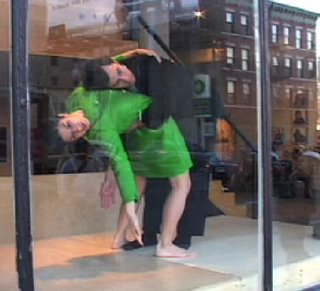Yale gave a free performance of Bach's St. John's Passion on Saturday under the conductor Simon Carrington. I've been to two performances of Bach's Mass in B minor and one performance of the St. Matthew Passion, but none of them held up to the recordings I had of each piece. This performance held up to the recording I own.
With 40 parts, the monumentality of the piece is overwhelming. Taking just over two hours to perform, the fact that something composed in 1724 can hold a twenty-first century audience of 700 (many of which were standing) in interest if not captivation attests to its magnitude and complexity. Sung in German, the accompanying program had the German text with English Translation along side. Bach's Mass in B minor is sung in Latin, but the John and Matthew Passion are in Bach's native tongue. This makes rhyming a little more difficult with words like
zugleich, Himmelreich, and Leidenszeit.
I've had a good portion of my life listening to Bach and I can associate many paintings with the when I first experienced a particular piece of Bach's. It's been years since I've seriously listened to one of the Masses. One's life tends to get caught up in the workings of today's culture (I wouldn't have known about the performance if I wasn't standing in line to buy a burrito).
Two hours is ample time to let your thoughts wander and gather as you experience a performance. Here are some:
One that has read the New Testament or has been raised going to church is familiar with the story of the Passion. The task of setting it to music tests the ability of perhaps the most abstract art to identify itself with language and character. This produces some surprising outcomes which in turn influence the interpretation of the story being told. The question then becomes, how does art influence story and meaning. For instance, in the thirst for Christ's death in the people, they shout/sing Crucify, Crucify! There is something powerful and glorious about the way it is sung. The rhythm is fast paced and comes across more as law than it does malice. There is a sense of celebration if not righteousness in the way it is sung. In turn, this makes one interpret the masses of people responsible for Christ's death as a necessary part of the story. Almost as if the crowd is proud of their sin. As if to march and say, "that is what we do, we crucify the son of God." In the melody and harmony it elevates the role of human sin.
---------------------------------------------------------
The complexity of the narrative rivals that of film. The mass is sung through multiple identities and times. The chorus shifts from identifying itself with the people crucifying Christ to the believers after the fact. Throughout the story this happens. We also experience the story through first and third person. The story through spoken word is that of St. John he tells the story in 3rd person. Then immediately we jump into first person through the songs of the characters as the story unfolds.
Example:
Reciter: "then the maid said to the door keeper" (3rd person) (past tense) (spoken in tone)
Female vocal: "Aren't you one of this man's followers?" (1st person) (present) (sung)
Reciter: "He said" (3rd person) (past tense) (spoken in tone)
Male Vocal: "That, I am not" (1st person) (present) (sung)
The effect of this is a story come to life and a holding of the interest of the listener through change.
---------------------------------------
The second aria for Soprano (sung by Melissa Hughes) is accompanied by two flutes. The range and timber of the flutes compliments that of the soprano and one experiences the human voice as an instrument. The church is large and by this time, I'm not looking at the performance but up at the nave. The voice is created by a person standing 300 feet away but it is in the air bouncing around. I can physically feel the voice in the way one might experience the vibrations of an electric guitar. One can visualize the piece of music as a reality with physical form. I try to imagine the shape of the sound of her voice as if she were blowing a bubble. Humans expand their identities beyond the physical boundaries of their body. Singing might be the simplest of these forms. The internet is another version of this (books, paintings, telephones, etc).
---------------------------------------
To be continued






